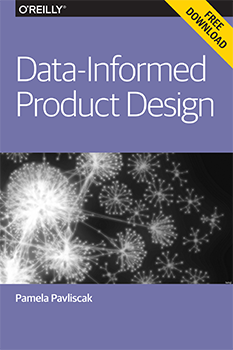Pamela Pavliscak
Designing with all of the data
More than just filling in where big data leaves off, thick data can provide a new perspective on how people experience designs.
Download a free copy of our new report “Data-Informed Product Design,“ by Pamela Pavliscak. Editor’s note: this post is an excerpt from the report.
There is a lot of hype about “data-driven” or “data-informed” design, but there is very little agreement about what it really means. Even deciding how to define data is difficult for teams with spotty access to data in the organization, uneven understanding, and little shared language. For some interactive products, it’s possible to have analytics, A/B tests, surveys, intercepts, benchmarks, scores of usability tests, ethnographic studies, and interviews. But what counts as data? And more important, what will inform design in a meaningful way?When it comes to data, we tend to think in dichotomies: quantitative and qualitative, objective and subjective, abstract and sensory, messy and curated, business and user experience, science and story. Thinking about the key differences can help us to sort out how it fits together, but it can also set up unproductive oppositions. Using data for design does not have to be an either/or; instead, it should be yes, and…
Big data and the user experience
At its simplest, big data is data generated by machines recording what people do and say. Some of this data is simply counts — counts of who has come to your website, how they got there, how long they stayed, and what they clicked or tapped. They also could be counts of how many clicked A and how many clicked B, or perhaps counts of purchases or transactions.
For a site such as Amazon, there are a million different articles for sale, several million customers, a hundred million sales transactions, and billions of clicks. The big challenge is how to cluster only the 250,000 best customers or how to reduce 1,000 data dimensions to only two or three relevant ones. Big data has to be cleaned, segmented, and visualized to start getting a sense of what it might mean. Read more…

